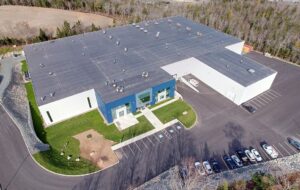As many in the agriculture industry are adjusting to a growing population, environmental changes, and other Earthly concerns, German researchers are setting their sights a bit higher: toward plants fit to endure harsh conditions on the Moon and Mars.

In an ambitious year-long mission called Eu:CROPIS (Euglena and Combined Regenerative Food Production in Space), several researchers from the University of Erlangen-Nuremberg (FAU) and the Institute for Aeronautical and Aerospace Medicine at the German Center for Aeronautics and Space Research (DLR) plan to launch a satellite containing two identical greenhouses into space during the spring of 2016.
The greenhouses — described as “compact life-support systems” — will come equipped with all the resources needed to grow and nurture the tomato plants inside, including filters, synthetic urine, and Euglena gracilis, a single-celled species of algae.
“With this experiment, we want to see whether it is possible to take plants into space in compact systems and use them appropriately in air, water, and urine recycling,” Dr. Sebastian M. Strauch, a senior scientist from the Division of Cell Biology at FAU, said. “This would be very useful for a long-term mission.”
Since it’s likely that astronauts will need to grow their own fruit and vegetables in order to survive lengthy expeditions to, from, and on the Moon and Mars, the key to making that possible is designing greenhouses that are both sustainable and able to withstand low gravity conditions.
The mini ecosystem within the greenhouse works like this: artificial urine is added in intervals to a water filter, where it’s broken down into nitrates by bacteria, becoming a nutrient-rich fertilizer. Euglena, adaptable organisms most famous for turning ponds pea soup-green, plays a vital role in the system by converting ammonia, which forms during the breakdown of urine, into protein. Without euglena present, the buildup of ammonia could kill the plant.
While it may be a while before a colony is established on Mars, Dr. Jens Hauslage, Principle Investigator at DLR, explains that this setup could prove beneficial to agriculture today.
“The manure which is spread on fields also naturally contains ammonia. A filter like ours could help reduce the burden on the soil and also provide more valuable nitrates,” Hauslage said.
To test how the plants and organisms function in reduced gravity, DLR is developing a lightweight satellite capable of shifting its rotational speeds to closely mimic lunar and Martian habitats. The satellite will simulate the Moon for the first leg of the mission and Mars for the second. Only one greenhouse will be active each six months, so researchers can investigate how each system handles different gravitational pressures and compare their findings.
After a year, the satellite will burn up during reentry into Earth’s atmosphere, leaving behind nothing but the data previously collected by sensors and cameras. Hauslage is confident that the mission will help future space-farers, as well as those living in less-than-hospitable areas, such as Antarctica, successfully grow their own food.
“The experiments on board Eu:CROPIS will deliver important results to enable humankind to survive in hostile environments – whether it be in space or here on Earth,” Hauslage said.
If you have any news or insights to share, drop us a line at [email protected].
FEATURED PHOTO: Eu:CROPIS




